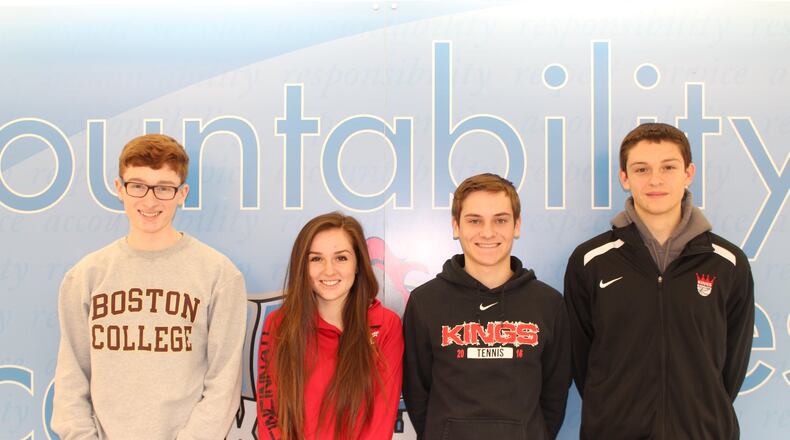This national competition gives participants the opportunity to use mathematical modeling to come up with solutions to relevant everyday issues.
This year more than 5,000 students from across the country were asked to make recommendations about the future of the NPS in regards to global change factors likely to affect park resources and visitor experience in coming years. The challenge problem remained top secret until the morning of the contest.
“The math challenge helps young mathematicians approach real-life problems using their analytical thinking skills. So many problems in the classroom are viewed as right or wrong. The beauty of the M3 Challenge is that there is no right answer. Students are asked to present their findings and support their recommendations to deal with the current issue at hand — applied mathematics in its most beautiful form,” said KHS math teacher Lynn Brant, who served as the teacher adviser for the team.
The Kings students had 14 hours to gather and evaluate data impacting national parks — sea level change risk and the effects of climate-related events like hurricane frequency, annual rainfall increases, avalanches and wildfires on coastal park sites.
They were charged with building a mathematical model to determine sea level change risk for five specific parks over the next 10, 20 and 50 years, assigning a climate vulnerability score to any NPS coastal unit, predicting long-term changes in visitors for each park and advising NPS on prioritizing future financial resources.
“The best way to approach the problem was to divide the work among us and then come to a consensus on our recommendation once all the variables had been weighed by every individual in their own area of the project,” said Gurley, who created a mathematical model for calculating climate risk for a given geographical location. “One of us worked on budgeting and regressions involving park visitors, while someone else worked on modeling a risk calculation and another on climate change research. While all of these different tasks were being accomplished, we were getting information to help figure out what we should recommend. We agreed, in the end, that budgeting high risk would be the best use of resources, unless a park has extremely high risk, in which case the park wouldn’t be able to be saved regardless of how much funding it received, and they would get funds equivalent to that of a medium- or low-risk coastal park.”
Of the initial 1,121 submissions, a total of 90 papers received awards: six finalists, six semi-finalists and 78 honorable mentions, including KHS as the top-placing team from Ohio. This recognition is the highest achievement in the school’s history of participating in the national competition.
Team members also are eligible to participate in a 10-week summer internship program.
“I really enjoyed being given the opportunity to think creatively and mathematically. Traditional math courses up until this point have been very process oriented, and, like tourists visiting a new country, we were given a simple road map guide to follow,” said Guerin. “In the M3 Challenge, however, we were not simply encouraged but forced to think outside of these typical confines — a more native approach if you will. It was rather refreshing.”
Contact this contributing writer at lisa.knodel@gmail.com.
About the Author
